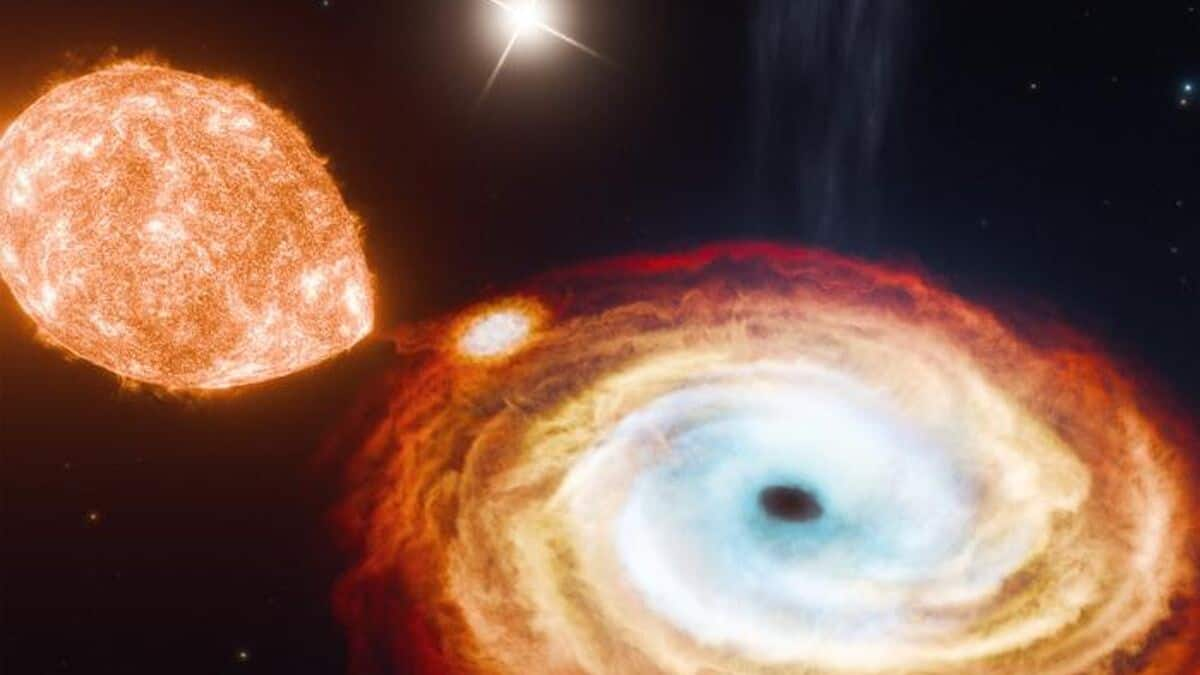Our Terms & Conditions | Our Privacy Policy
MIT scientists discover 1st-ever black hole triple system
Was a long read? Making it simpler…
Next Article
New study redefines traditional views on black hole formation
What’s the story
In a recent study, scientists from the Massachusetts Institute of Technology (MIT) and the California Institute of Technology (Caltech) have discovered a black hole triple system.
This is the first time such a configuration has been observed.
The unique system consists of a central black hole consuming a nearby star that orbits it every 6.5 days, and another distant star orbiting it every 70,000 years.
Black hole must have formed due to ‘direct collapse’
The discovery of the black hole triple system is challenging existing theories about how black holes are formed.
Traditionally, black holes are believed to form from the violent explosion of a dying star, a process known as a supernova.
However, the newly discovered triple system suggests that this black hole may have formed through a gentler process called “direct collapse” rather than a violent supernova, due to the presence of a distant star orbiting the central black hole.
Discovery of black hole triple system was unexpected
The discovery of the black hole triple system was somewhat fortuitous. The scientists stumbled upon it while examining Aladin Lite, a collection of astronomical observations from telescopes worldwide.
They were initially searching for new black holes within our Milky Way galaxy when they made this unprecedented discovery.
Triple system centers on well-studied black hole
The triple system revolves around V404 Cygni, a black hole situated some 8,000 light-years away from Earth.
Even though it is one of the most studied black holes (since 1992), none of the previous studies reported what study author Kevin Burdge and his colleagues observed.
The team spotted two different sources of light near V404 Cygni, which led to the discovery of this unique triple system.
Outer star’s motion confirms triple system
To confirm the link between the outer star and the black hole, scientists examined data from Gaia, a satellite that has been monitoring all stars in our galaxy since 2014.
They observed that both the stars moved in perfect sync as opposed to other nearby stars.
The odds of such synchronized movement are about one in 10 million, further solidifying their discovery of this unique triple system.
Simulations support theory of black hole’s gentle formation
To understand how this triple system could have evolved and retained the outer star, Burdge and colleagues conducted simulations.
The results overwhelmingly showed that the most plausible way for this triple system to exist is through direct collapse.
This supports their theory that the black hole in question was formed gently, without a violent supernova explosion.
Images are for reference only.Images and contents gathered automatic from google or 3rd party sources.All rights on the images and contents are with their legal original owners.




Comments are closed.